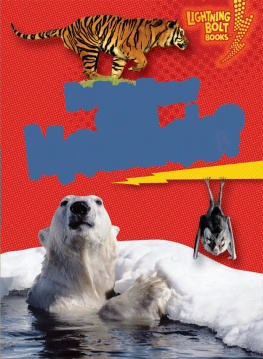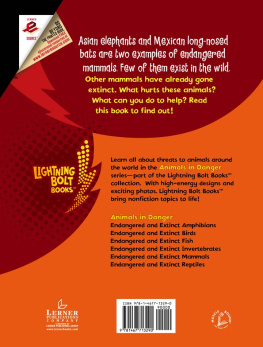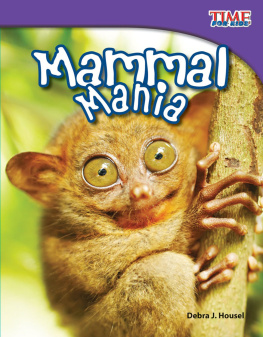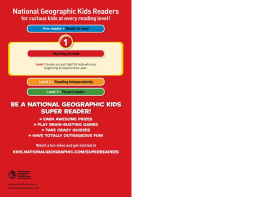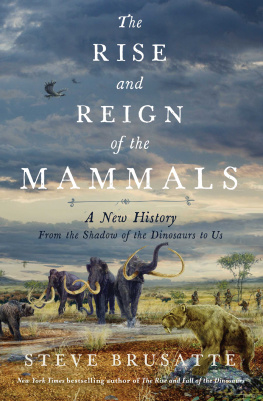Table of Contents
Guide
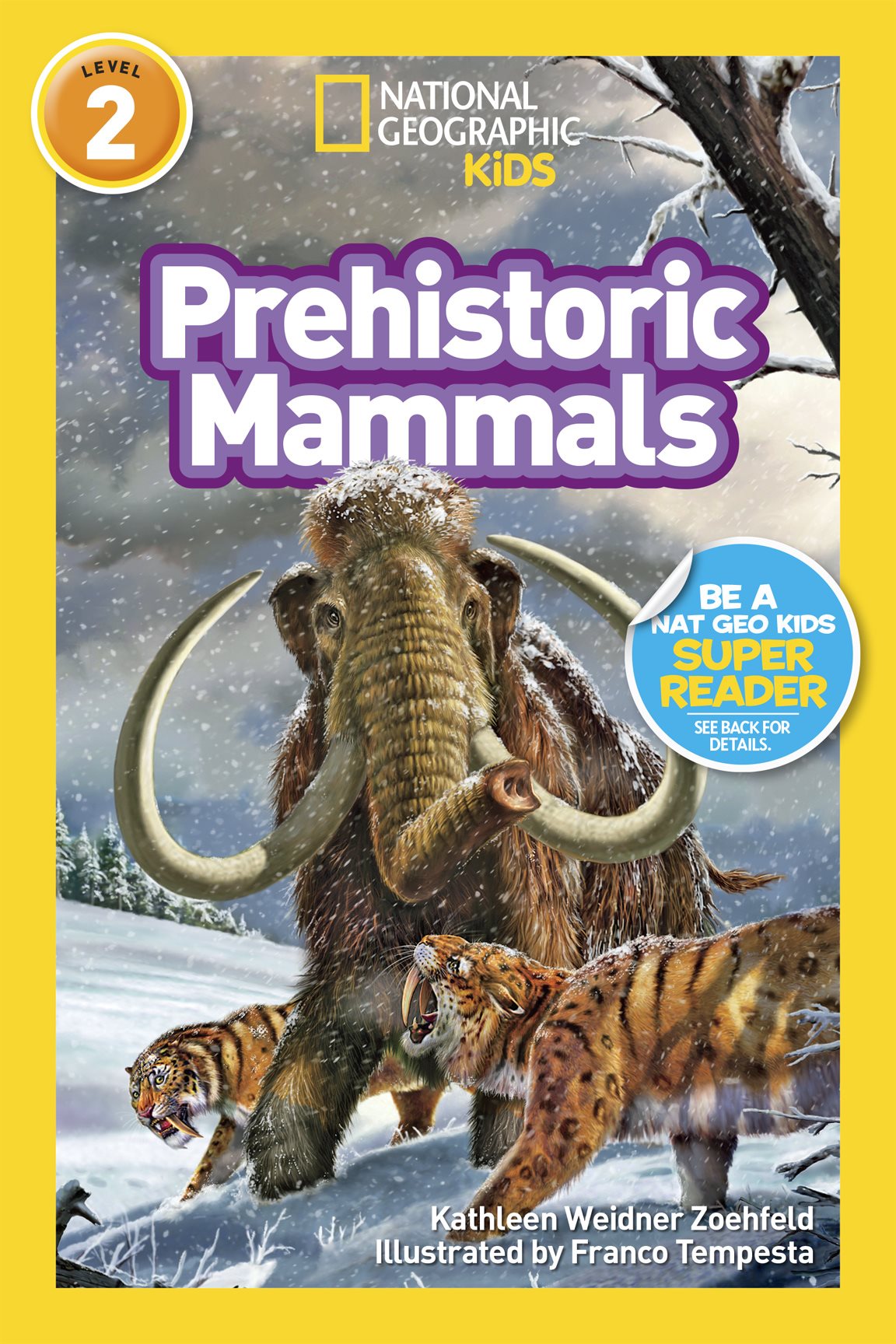

Children are naturally curious about the world around them, and
curiosity is a powerful motivation for reading. Studies show that
informational reading is critical to success in school. National
Geographic Kids Readers allow you to feed your childrens interests
and create readers who not only can read, but also want to read!
To sustain childrens excitement about reading, we have created a
special program called NATIONAL GEOGRAPHIC KIDS SUPERREADERS.
As kids read each National Geographic Kids Reader, they cross
off its picture on a free National Geographic Kids Super Readers
poster that parents can download from kids.nationalgeographic.com/
superreaders.
Throughout the process, kids and parents go to the website and
download specially designated prizes that reward their effort. Kids
can have even more reading fun online, with lively book-related
activities, quizzes and games, fascinating excerpts, and sneak
previews of upcoming books.
The National Geographic Kids Super Readers program appeals to
kidslove ofaccomplishment while providing them with incentives
to keep reading.When the reading experience is fun, children learn
more and achieve more.What could be better than that?
Sincerely,
Mariam Jean Dreher
Professor of Reading Education
University of Maryland, College Park
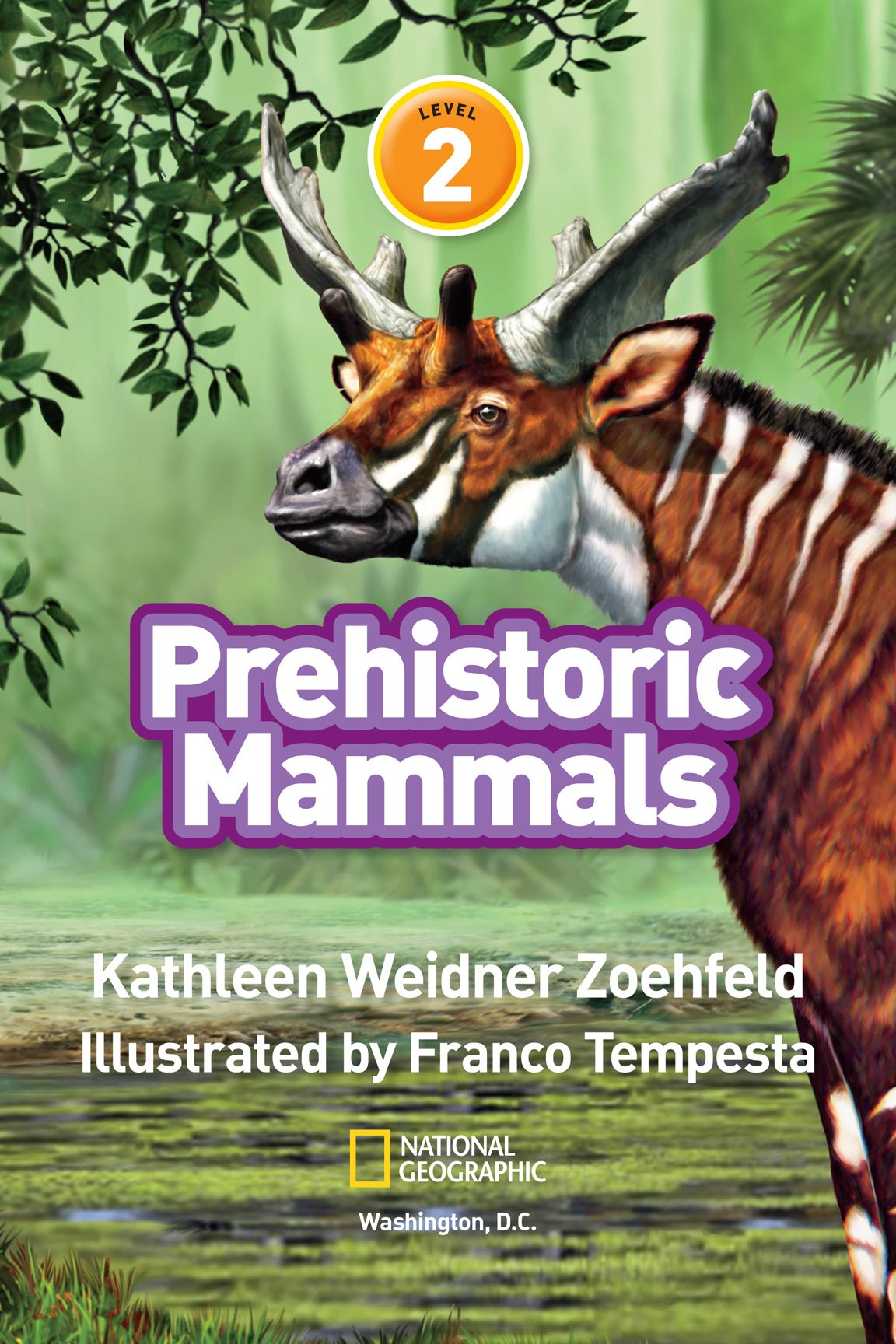

For Nancy K.W.Z.
Copyright 2015 National Geographic Society
Published by the National Geographic Society,
Washington, D.C. 20036.
All rights reserved. Reproduction in whole or in
part without written permission of the publisher
is prohibited.
Paperback ISBN: 978-1-4263-1951-8
Reinforced Library Binding ISBN:
978-1-4263-1952-5
eISBN: 978-1-4263-1954-9
Editor: Shelby Alinsky
Art Director: Amanda Larsen
Editorial: Snapdragon Books
Designer: YAY! Design
Photo Editor: Vanessa Mack
Design Production Assistants: Allie Allen,
Sanjida Rashid
The publisher and author gratefully acknowl
edge the expert content review of this book by
Chris Widga, Ph.D., of the Illinois State Museum,
and the expert literacy review by Mariam Jean
Dreher, professor of reading education, Univer
sity of Maryland, College Park.
Because dinosaurs and prehistoric mammals
lived so long ago, there are no photographs of
them. An artist drew the animals you see in
this book. The art shows what paleontologists
think each dinosaur and prehistoric mammal
looked like.
On the cover, the prehistoric mammals
Mammuthus (ma-MOO-thuss) and Smilodon
(SMILE-oh-don) are shown. The title page art
features Sivatherium (SHEE-vah-THEE-ree-um),
and the table of contents page, Gomphotherium
(GOM-foe-THEE-ree-um).
Illustration Credits
All artwork by Franco Tempesta unless otherwise
noted below:
Top border (throughout), freelanceartist/Shutter
stock and Fricke Studio/Shutterstock; vocabulary
box (throughout) koyukahve/iStockphoto; 10-11
(CTR), Corey Ford/Stocktrek Images/Getty Images;
14 (CTR), DEA Picture Library/Getty Images; 24 (LO)
, Dorling Kindersley/Getty Images; 28 (CTR), Javier
Trueba Rodriguez/Science Photo Library/Corbis;
29 (UP), Richard Du Toit/ Minden Pictures; 30
(horse), mariait/Shutterstock; 30 (dog), RyanJLane/
iStockphoto; 30 (girl), Mark Bowden/iStockphoto;
30 (CTR), David McNew /Getty Images; 31 (UPLE),
Claudio Bertoloni/Shutterstock; 31 (CTR RT),
Pakhnyushchy/Shutterstock; 31 (CTR LE), Starlight
Images/iStockphoto; 31 (snake skin), fotoslaz/Shut
terstock; 31 (feathers), Kirshelena/Shutterstock; 31
(fur), Artem and Victoria Popovy/Shutterstock; 31
(cow), Worldpics/Shutterstock; 32 (CTR RT), Maggy
Meyer/Shutterstock; 32 (LORT), Dorling Kindersley/
Getty Images
National Geographic supports K-12 educators with ELA Common Core Resources.
Visit natgeoed.org/commoncore for more information.
15/WOR/1
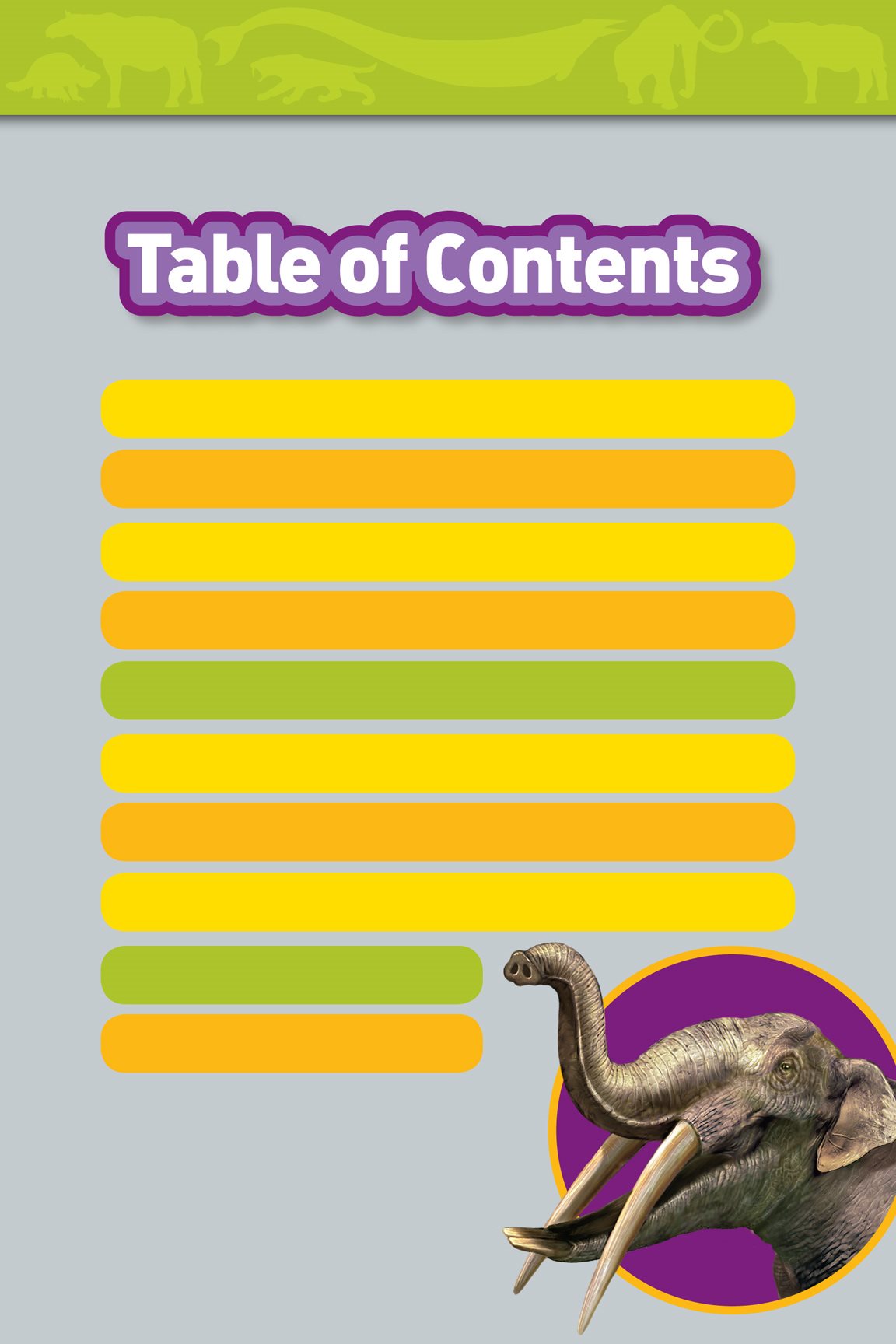

Earths first mammals lived long,
long ago. Like mammals today,
they had hair or fur. Most gave
birth to live babies. And they fed
the babies milk.
The first mammals were small.
They lived among giant dinosaurs.
Most mammals came out only
at night and hid safely during
the day.
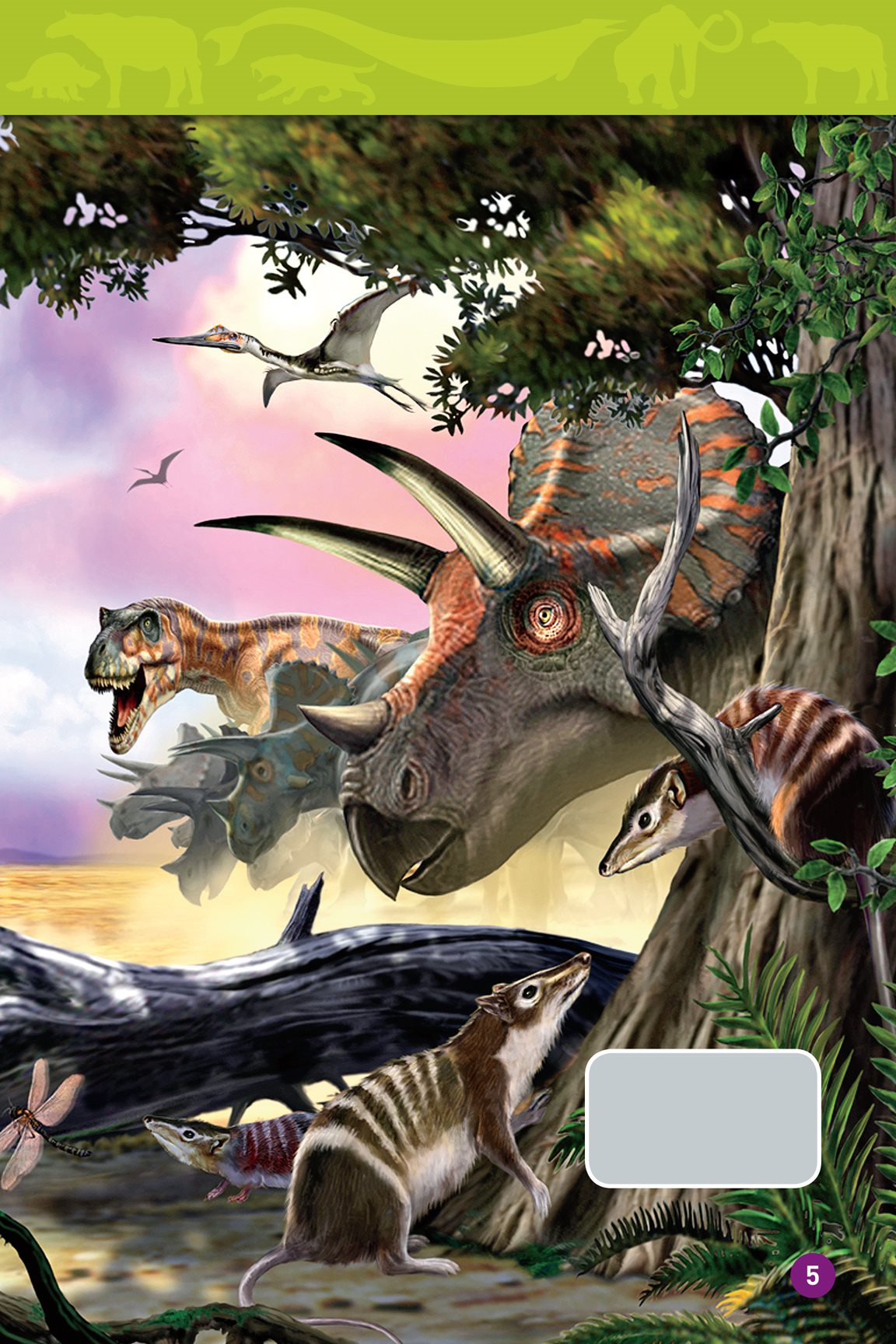
Cimolestes
(sim-oh-LESS-tees),
72 to 56 million
years ago
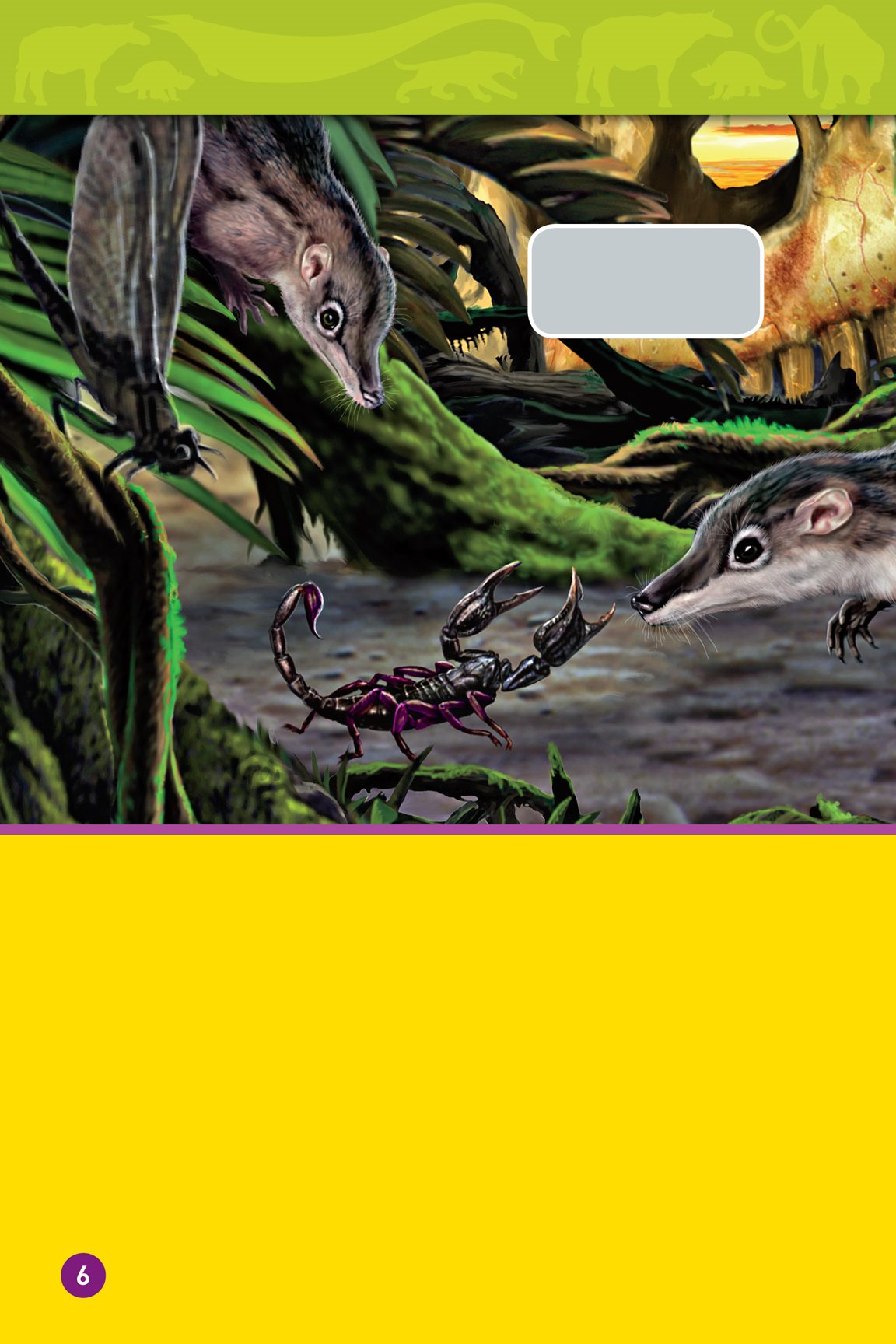
Alphadon
(AL-fa-don), 75 to 66
million years ago
Then, million years ago, all the
big dinosaurs died out. A few types
of tiny mammals lived on. But with
all the big dinosaurs gone, mammals
didnt have to hide anymore.
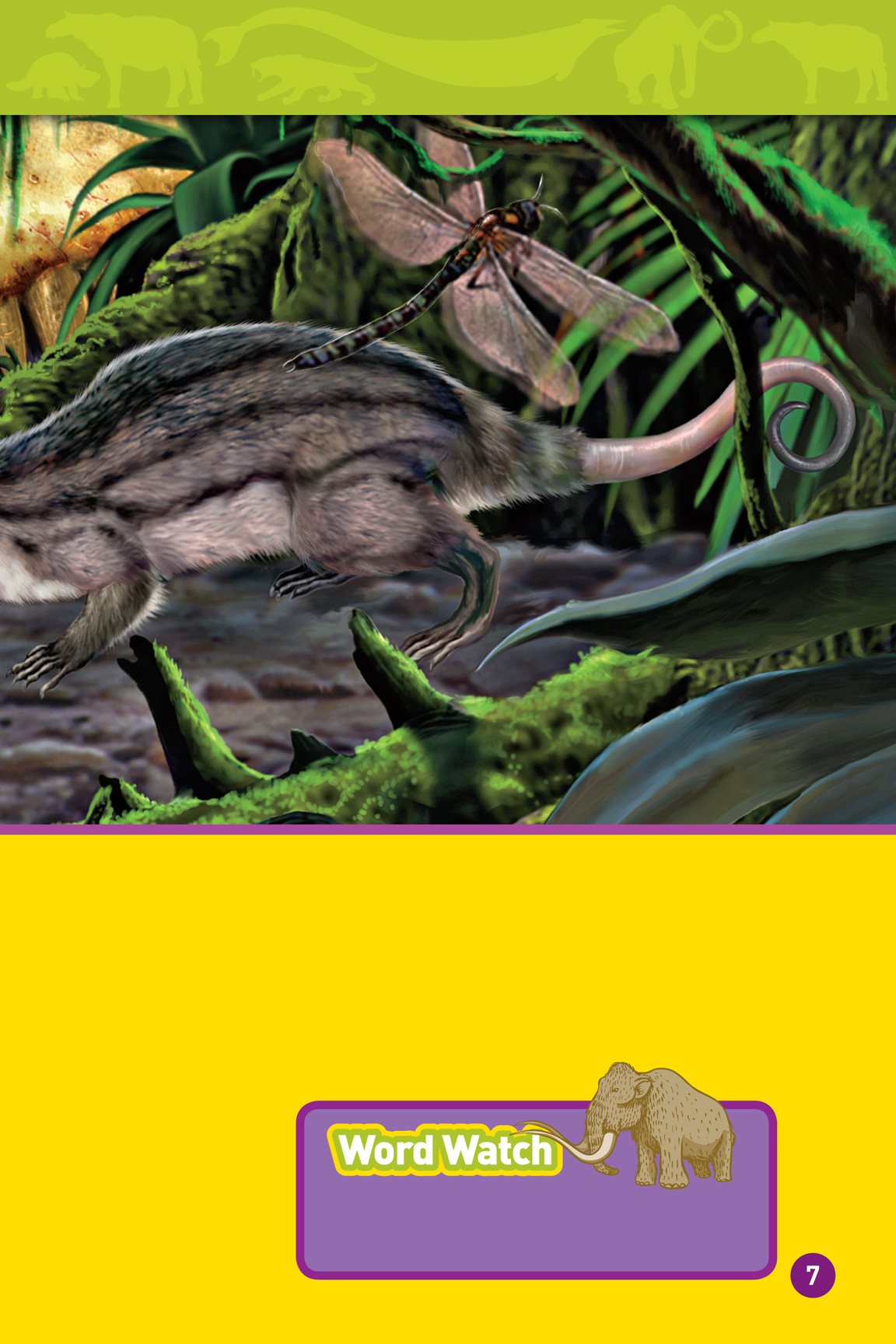
Over millions of years, mammals of
many shapes and sizes filled the Earth.
Lets meet some prehistoric mammal
superstars!
PREHISTORIC: from a time long ago,
before people invented written language
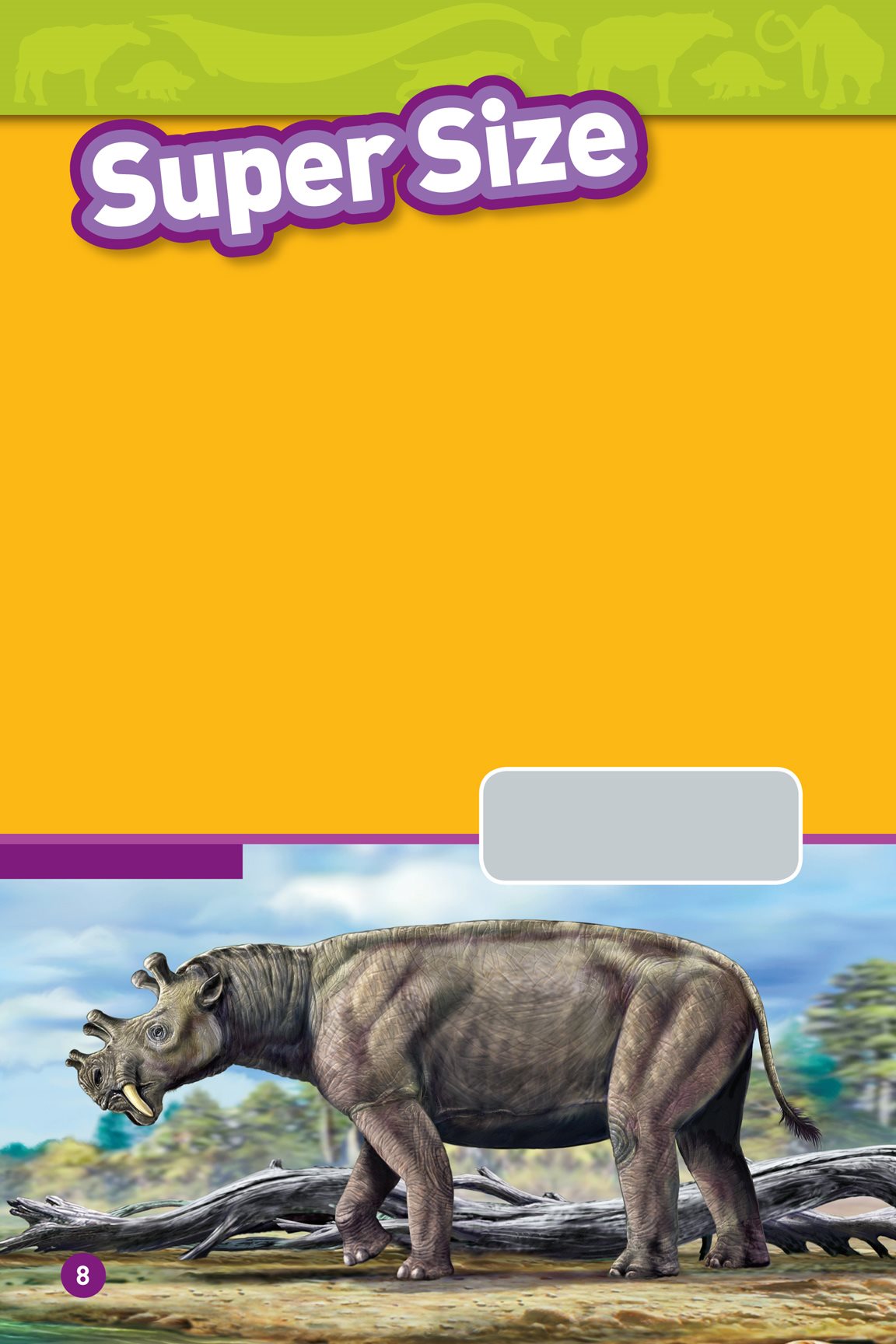
Some prehistoric mammals were
huge. A large size helps an animal
fight off smaller enemies.
Earths first really big mammal was
about the size of todays rhinos.
It had long, saber- like teeth. But, it
only ate plants!
Uintatherium
(you-IN-tah-THEER-ee-um),
50 to 45 million years ago
PLANT-EATER

MEAT-EATER
Andrewsarchus (AN-drew-SAR-kus),
40 million years ago
One of the biggest meat- eating
mammals had a head almost three
feet long. Its jaws were strong
enough to crush bones.


